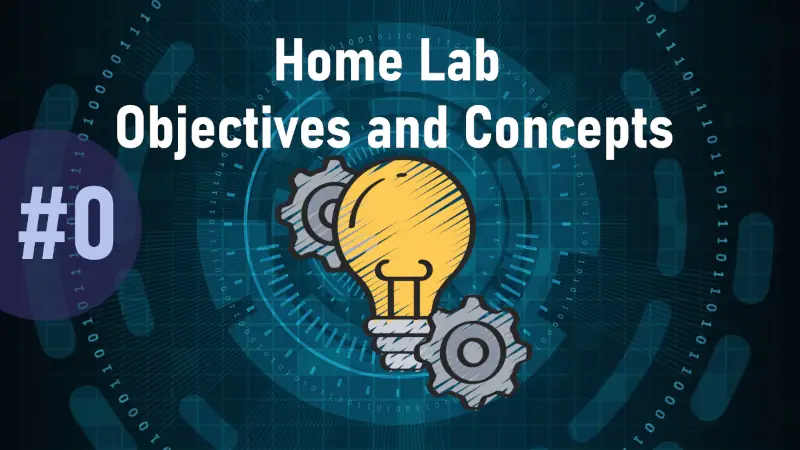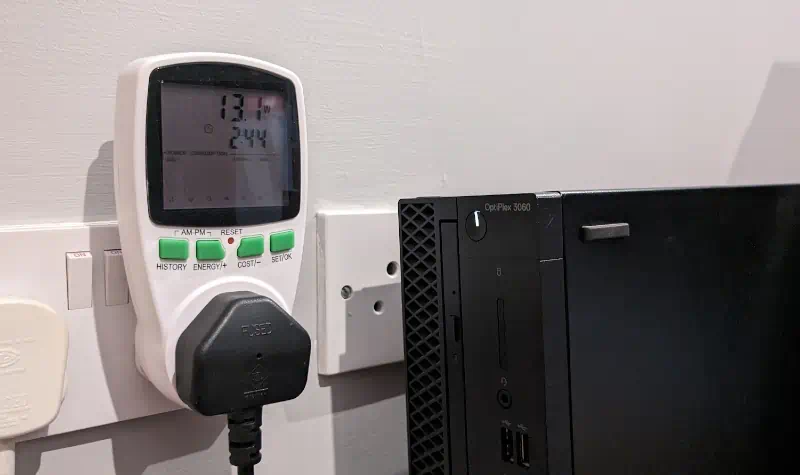
Home Lab Objectives
Ok, You would like to build a Home Lab, but you are not sure where to start? what and how to build it exactly? with what hardware? what software should you choose? how much electricity it will cost you running it all day? etc. These are all valid questions and I hope to answer them here.
Home Lab Objectives
- Low TCO (total cost of ownership)
- Low power consumption
- Low noise and heat output
- Compact size
Home Lab hardware cost
The main objective is to do it cheap. This is not going to be a guide on how to buy secondhand equipment, rack and stack cabinet full of servers that consume tones of power and generating a lot of heat and noise. All what you need is a single desktop computer. I will be using an old Optiplex 3060 desktop, with additional HDD and dual network card.
I want you to start small, build it, use it, learn it and then decide if you need more power or service separation. After getting familiar with your first Lab Server, it should be easy to migrate into something more enterprise grade and faster. Buying an old server and running it 24/7 averaging 10% load cost money, is noisy and require dedicated space.
This single PC build will be your entire Home Lab virtualized environment including pfsense router/firewall, VMs like OMV as NAS, Debian/Ubuntu as a Docker host serving as many containers as you like, maybe Windows VM, all virtualized on XCP-ng hypervisor managed by Xen Orchestra. All that is an open sourced software and can be used for free.
Home Lab server can be build in many different ways and include variety of the components. You could use Proxmox rather than XCP-ng, OpenSense instead pfSense or TrueNAS instead of OMV etc. I am choosing this setup for no particular reason and won't be discussing what is better or why not this over that? Stick with me it will be worth it.
Home Lab power consumption
Home Lab server is a great fun if you can run it 24/7, but you might wonder - how much is it going to cost?
My Optiplex 3060 SFF idles at around 25 Watts and tops at about 90 Watts - how much is this going to cost if 90% of the time server stay idle burning 25 Watts per hour?
In order to know, what is your PC real power consumption, you would need to measure it somehow. If you would like to see real power consumption value, you could buy something called "Plug-In Power Meter", this small device in easy to use and will let you measure consumption in real time of many device with a plug.
BTW: it does not matter if your PSU is 500 or 750 Watts, computers need only small percentage of that power at majority of the time.

After you measure PC power consumption while running, then you can calculate estimated cost of electricity based on your power supplier electricity prices. In order to know how much you are paying for a 1KWh, check your supplier prices online or review your last bill.
In September 2023 my electricity supplier charges me (39.59cents per kWh) lets say it is (0.40 euro per kWh). What does that mean?
Cost or electricity: 1kWh = 1000 Watts per hour = 0.40 euro
My Home Lab server consume on average 25 Watts per hour, this means that in 24 hours it will consume 24 hours x 25 Watts = 600 Watts
This 600 Watts per day times 30 days = 18 000 Watts per month. 18 000 Watts = 18kWh
Now if 1000 Watts = 1kWH cost 40 cents it means that Home Lab server will cost me 18kWh x 0.40 euro = 7.20 euro per month.
What I just calculated is pure energy cost. On top of that your supplier will add VAT and possibly delivery charges but all that together wont be much more. I could say that at tops it will cost me about 10 euros per month to run my server 24/7.
If my server would consume 50 Watts, energy cost will double, if 100 Watts it will quadruple etc. The most important is to measure server power consumption during normal operation and then calculate it in relation to your energy prices.
Office desktop PCs from Dell, Lenovo, HP etc usually consume about 25 Watts at idle, mini PCs can go below 15 watts, rack servers might ide at around 80 Watts. No matter the age of the hardware, power consumptions is very similar but newer hardware consuming relatively the same amount of power as the old one will deliver more performance, therefore choosing newer hardware will give you more speed but not necessary save you on electricity consumption.
Home Lab noise and heat output
Desktop PCs are designed to be quiet as normally they are installed on your desk. You could also decide and get a fanless mini PC that would be silent but its expandability might be somehow limited. Old server is a great stuff if you can get it cheap but they are much louder and require some cooling thoughts if you push it hard. Bear in mind that enterprise hardware is quite specific and when failing you might have a hard time to troubleshoot it and get a replacement part without any warranty on it - I am talking about blowned capacitor rather than faulty disk.
Proper server hardware will for sure give you more power and speed but will cost more to run also. Enterprise grade server will give you a chance to familiarize yourself with hardware offloading and remote management like iLO or iDRAC.

Above all, blinking lights in a rack look great and getting your home a datacenter look might be tempting, unfortunately noise and energy bill will destroy that feeling soon enough.
Help me make LMDS better
With your support anything is possible
- Beginner
- Objectives
- Concept
- Hardware
- Hypervisor
- Hypervisor Manager
- Hypervisor Initial Config to be continued...
- Advanced
- My Quiet Lab
- Active
- Depreciated


